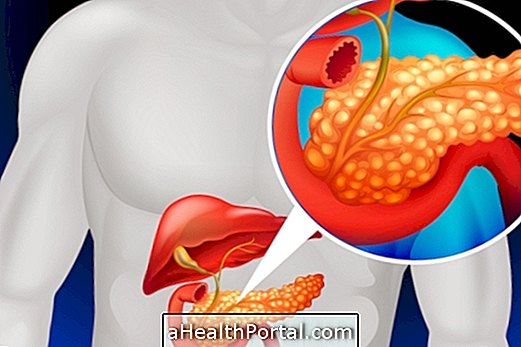Treatment for metabolic syndrome should be guided by a general practitioner or cardiologist, and usually aims to reduce the risk of developing heart disease and type 2 diabetes. rather than the use of drugs such as antihypertensives, blood glucose and cholesterol regulators.
Metabolic syndrome is dangerous for health, since it is associated with the development of several complications, such as infarction, stroke, diabetic retinopathy or even increased risk of death. Learn more about what it is and how to identify the metabolic syndrome.

Natural Treatment
Treatment for metabolic syndrome should initially include changes in lifestyle, with special attention to nutritional changes and physical activity. The main guidelines include:
- Lose weight until the BMI falls below 25 kg / m2, and also to reduce abdominal fat, because the risk of heart disease is higher in this type of patients;
- Eat a balanced and healthy diet, avoiding salt in meals and not eat too sugary or fatty foods, such as fried foods, soft drinks and pre-prepared foods, for example. Here's how a proper diet should be: Diet for metabolic syndrome;
- Do 30 minutes of physical activity per day, such as walking, jogging, or biking. In some cases, the doctor may recommend an exercise plan or refer the patient to a physical therapist.
See more feed tips:

Treatment with medicines
Medications for metabolic syndrome are usually prescribed by the doctor when the patient is unable to lose weight, lower blood sugar and cholesterol, and lower blood pressure only with changes in diet and exercise.
In these cases, the doctor can guide the use of:
- Blood pressure lowering medicines like Losartan, Captopril, or Hydrochlorothiazide, for example;
- Blood sugar lowering medicines such as Metformin, Glycazide, or Insulin;
- Medications to reduce cholesterol and triglycerides such as rosuvastatin or simvastatin. Check out the main cholesterol-lowering treatments;
- Weight-loss pills such as sibutramine or Xenical, directed by the endocrinologist, if the person can not lose weight with diet or exercise.
These drugs are used in the dose and in the amount indicated for each person, in order to keep the tests at adequate levels and to reduce the risk of complications of the metabolic syndrome.
Signs of improvement
Signs of improvement in the metabolic syndrome include regularization of blood pressure, reduction of waist circumference, and decrease in blood cholesterol or blood sugar levels. Therefore, the patient with metabolic syndrome should have regular blood tests to evaluate the progression of the disease.
Signs of worsening
Signs of worsening of the metabolic syndrome mainly arise when treatment is not done properly and may include increased blood pressure, severe chest pain, excessive tiredness, and increased levels of cholesterol or blood sugar.



























